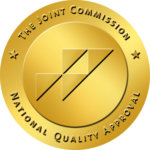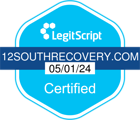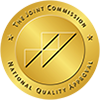Key Takeaways
- Amphetamine salts combine both d- and l-amphetamine for balanced stimulation; dextroamphetamine contains only the d-isomer for more focused mental effects.
- Misuse of either medication can lead to stimulant abuse, addiction, and serious mental health risks.
- Treatment options at 12 South Recovery include detox, therapy, and dual diagnosis support.
Grabbing Attention & Offering Value
Prescription stimulants are commonly used to treat ADHD and narcolepsy. With various medication types like amphetamine salts and dextroamphetamine, confusion often arises. You may have heard of Adderall or Dexedrine. Both are popular treatments, yet few people can explain the differences between their key ingredients. Knowing the distinction between these medications is essential for anyone prescribed a stimulant—or anyone concerned about stimulant abuse. If stimulant abuse is affecting your life, know that 12 South Recovery is here with proven treatment options.

What Are Amphetamine Salts?
Amphetamine salts are a compound mixture, typically combining equal parts of four different amphetamine salts:
- Dextroamphetamine saccharate
- Amphetamine aspartate
- Dextroamphetamine sulfate
- Amphetamine sulfate
This combination balances the stimulating effects of both d-amphetamine and l-amphetamine components. The result? A medication that targets a wide range of symptoms by impacting multiple brain pathways.
Amphetamine salts are most commonly found in Adderall and its generic versions. Due to the inclusion of both enantiomers, amphetamine salts may cause more physical stimulation (from the levoamphetamine) alongside enhanced focus (from the dextroamphetamine).
Stimulant Abuse of Amphetamine & Dextroamphetamine becomes a concern when patients increase their dosage without medical advice. It also arises when the drug is used recreationally. Abuse can lead to dependence, anxiety, sleep disruption, and even heart problems.
What Is Amphetamine Used For?
Amphetamine-based medications are central nervous system (CNS) stimulants used primarily to treat:
- Attention Deficit Hyperactivity Disorder (ADHD)
- Narcolepsy (a sleep disorder)
Amphetamine salts refer to a mixture of different amphetamine compounds, usually including both dextroamphetamine and levoamphetamine salts. This blend is found in popular drugs like Adderall. It works by increasing focus, attention, and alertness through changes in neurotransmitter levels, especially dopamine and norepinephrine.
Doctors carefully prescribe amphetamines because of their powerful effects on behavior and cognition. However, misuse, especially without a prescription or at high dosages, can lead to stimulant abuse and dependency. It may also cause long-term health risks.
What Is Dextroamphetamine?
Dextroamphetamine is the right-handed isomer (d-amphetamine) of amphetamine. It’s one of the most potent ingredients found in medications like:
- Dexedrine
- ProCentra
- Zenzedi
It’s a stimulant that increases dopamine in the brain’s prefrontal cortex. This region is linked with attention and impulse control. Because it’s more neuro-selective, dextroamphetamine is often considered to have a stronger effect on focus and attention. It is less associated with physical energy stimulation.
While effective for ADHD and narcolepsy, Dosages of Dextroamphetamine must be carefully adjusted. This helps avoid side effects such as insomnia, mood swings, or tolerance buildup.
Unlike amphetamine salts, dextroamphetamine doesn’t include levoamphetamine, making it more specific in its stimulant activity. However, its power also raises the risk of substance abuse when taken without a prescription or at inappropriate dosages.
What Is the Difference Between Amphetamine Salts and Dextroamphetamine?
Let’s break it down:
| Feature | Amphetamine Salts | Dextroamphetamine |
| Composition | Mix of d- and l-amphetamine | Pure d-amphetamine |
| Common Brands | Adderall | Dexedrine, ProCentra |
| Effect Profile | Balance of cognitive and physical stimulation | Primarily cognitive stimulation |
| Dosage Variation | More gradual onset | Can be faster acting |
| Abuse Potential | High (especially if misused) | Also high, depending on use |
Are dextroamphetamine and amphetamine salts the same?
No, while both are stimulants and share a common ingredient (d-amphetamine), they are not identical. Amphetamine salts include additional compounds that broaden their effect. Dextroamphetamine is more focused on mental stimulation, which can mean different side effect profiles and treatment responses.
Is D-Amphetamine Salt Combo the Same as Adderall?
Yes and no. The phrase D-amphetamine salt combo generally refers to a mix of dextroamphetamine salts. While Adderall does contain dextroamphetamine, it also includes levoamphetamine, which adds a layer of physical stimulation. So while there’s overlap, they’re not identical.
Adderall’s broader composition can lead to stronger side effects in some users. This is especially true for those sensitive to physical symptoms like rapid heart rate or anxiety. Others may prefer it for its more well-rounded stimulation.
Regardless of the version, misuse of these medications without proper diagnosis and supervision can lead to stimulant abuse.
Amphetamine Dosages vs. Dextroamphetamine Dosages
Amphetamine Dosages and Dosages of Dextroamphetamine are not interchangeable. Because of their unique formulations, your doctor will prescribe based on:
- Weight
- Age
- Diagnosis
- Medication response
- Co-occurring mental health conditions
Typical Dosages:
| Medication Type | Starting Dose (Adults) | Maximum Dose (Adults) |
| Amphetamine Salts (Adderall) | 5 mg once or twice per day | Up to 40 mg/day (divided) |
| Dextroamphetamine (Dexedrine) | 5 mg once or twice per day | Up to 40 mg/day (divided) |
Abuse often begins with small increases in dosage—“just a little more to focus better.” This can quickly spiral into dependence and long-term mental health concerns.
Stimulant Abuse of Amphetamine & Dextroamphetamine
Prescription stimulants may feel like miracle drugs, but misuse or unprescribed use is a major public health concern. Stimulant abuse of amphetamine & dextroamphetamine has been linked to:
- Insomnia and sleep disorders
- Cardiovascular issues
- Anxiety and paranoia
- Addiction
- Poor mental health outcomes
It often starts innocently, using someone else’s Adderall for a college exam. Another common example is taking an extra pill during a stressful workweek. But soon, the body demands more. Tolerance grows. Dependency forms.
Substance abuse can escalate quickly without anyone realizing the warning signs. That’s why early addiction treatment is crucial.
Treatment Options for Stimulant Abuse
If you or someone you know is struggling with stimulant abuse, treatment options are available. At 12 South Recovery, we treat the mental health challenges and behavioral patterns that often lead to amphetamine misuse.
Programs include:
- Medical detox
- Dual diagnosis therapy
- Behavioral therapy (CBT & DBT)
- Outpatient and inpatient care
- Family counseling and education
Effective recovery is about more than simply quitting the medication. It means working through emotional pain, recognizing harmful thought patterns, and creating a solid network of people and tools that help you stay grounded for the long haul.
Take the Next Step at 12 South Recovery
The dangers of stimulant abuse are real and often underestimated. Misusing medications like amphetamine salts or dextroamphetamine can lead to severe health consequences. These include heart problems, anxiety, paranoia, and long-term cognitive issues. Over time, tolerance builds, dependency strengthens, and the ability to function without these substances diminishes. This puts individuals at risk not only for addiction but for dangerous behaviors and mental health deterioration.At 12 South Recovery, we offer proven care that treats both physical dependence and the thinking habits behind stimulant misuse. Our team helps you recover, feel better, and build lasting tools for a healthier life. Your health and well-being matter. Don’t wait, call 12 South Recovery Today!






































